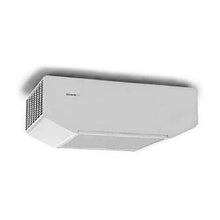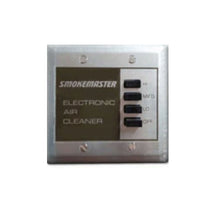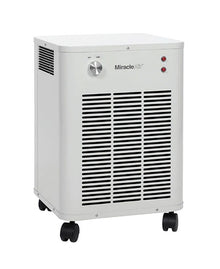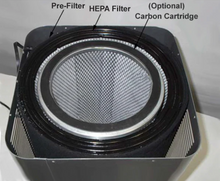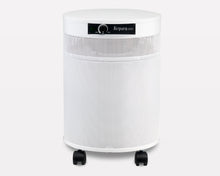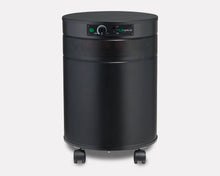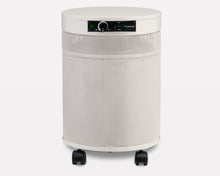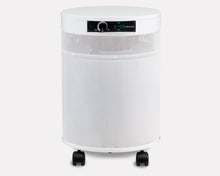Clear the Air: A Comprehensive Guide to Air Purification for Daycare Centers
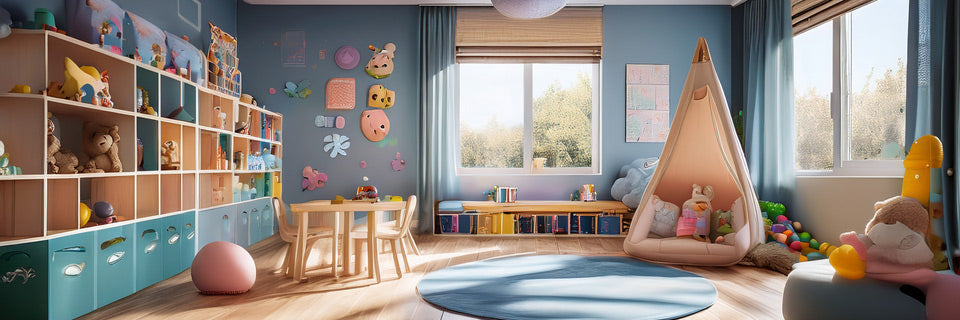
Introduction: Creating a Healthier Haven for Little Ones
As a daycare owner or manager, you're dedicated to providing a safe, nurturing, and stimulating environment for the children in your care. You meticulously plan educational activities, ensure nutritious meals, and maintain rigorous safety protocols. But have you ever considered the unseen element that profoundly impacts the health and well-being of every child and staff member under your roof: the air they breathe?
Poor indoor air quality in daycare settings is a silent but significant concern, often linked to increased rates of respiratory illnesses, allergies, and even behavioral issues. At Commercial Air Purifiers, LLC, we understand the unique challenges faced by childcare facilities. This comprehensive guide is designed to equip you with the essential knowledge about air purification – its undeniable benefits, what to look for in a commercial air purifier, and how investing in cleaner air directly impacts your bottom line.
The Unseen Challenge: Understanding Indoor Air Quality in Daycares
Children are particularly vulnerable to airborne contaminants. Their respiratory systems are still developing, and they breathe at a faster rate than adults, inhaling a greater volume of air relative to their body size. Daycare environments, by their very nature, can amplify indoor air quality challenges.
Consider the common culprits:
- Pollen and Outdoor Pollutants: Open windows and doors, and children moving between indoor and outdoor play, can introduce allergens and pollution from outside.
- Dust Mites and Pet Dander: Even without pets on-site, children and staff can bring in pet dander on their clothes, and dust mites are ubiquitous in carpets, upholstery, and bedding.
- Mold Spores: Moisture from spills, humidifiers, or even just high humidity can create breeding grounds for mold, leading to respiratory problems.
- Volatile Organic Compounds (VOCs): These are gases emitted from a variety of products and materials, including cleaning supplies, paints, glues, new furniture, and even some art supplies. Short-term exposure can cause headaches, nausea, and eye/nose/throat irritation, while long-term exposure can have more serious health effects.
- Bacteria and Viruses: Daycares are hubs for germ transmission. Sneezes, coughs, and even talking release airborne particles containing bacteria and viruses, contributing to the rapid spread of colds, flu, and other infectious diseases.
- Cleaning Product Fumes: While essential for hygiene, many conventional cleaning products release harmful chemicals into the air.
The implications of these airborne pollutants are far-reaching. Studies have consistently linked poor indoor air quality to:
- Increased Respiratory Illnesses: Higher rates of asthma attacks, bronchitis, and common colds among children and staff.
- Allergies and Sensitivities: Exacerbated symptoms like sneezing, runny nose, watery eyes, and skin irritation.
- Reduced Concentration and Learning: Children affected by poor air quality may experience fatigue, headaches, and difficulty focusing, impacting their cognitive development and engagement in activities.
- Absenteeism: Both children and staff miss more days due to illness, leading to disruptions in learning, staffing challenges, and lost revenue for your center.
A 2021 study published in Environmental Health Perspectives highlighted the significant impact of indoor air pollution on children's respiratory health in childcare settings, noting that elevated levels of particulate matter and VOCs were associated with increased prevalence of asthma symptoms and reduced lung function. [Link to a relevant research study, e.g., via PubMed or a university health research page, if available and current]. Another compelling meta-analysis from 2023 in The Lancet Planetary Health underscored the global burden of indoor air pollution on pediatric health, reinforcing the critical need for effective mitigation strategies in places where children spend significant time. [Link to another credible, recent study, e.g., through The Lancet or a similar reputable journal].
The Breath of Fresh Air: Benefits of Air Purification for Daycare Centers
Integrating commercial-grade air purifiers into your daycare is not merely a luxury; it's a strategic investment in the health, safety, and operational efficiency of your business. Here’s how improved air quality can benefit your center:
1. Enhanced Health and Well-being for Children and Staff
This is, without a doubt, the most profound benefit. By continuously filtering out airborne pathogens, allergens, and pollutants, air purifiers create a healthier environment.
- Reduced Illness Transmission: High-efficiency particulate air (HEPA) filters can capture airborne viruses and bacteria, significantly reducing the spread of contagious illnesses like the common cold, flu, and even norovirus. This means fewer sick days for children and staff, and a more consistent learning environment.
- Alleviation of Allergy and Asthma Symptoms: For children and staff suffering from allergies or asthma, cleaner air can dramatically reduce triggers like pollen, dust mites, pet dander, and mold spores, leading to fewer symptoms and a greater sense of comfort.
- Improved Respiratory Health: Long-term exposure to pollutants can have lasting impacts on developing lungs. By removing these harmful particles, air purification supports healthier respiratory systems in children.
2. Boosting Your Bottom Line: The Economic Advantages
While the initial investment in commercial air purifiers might seem like an added expense, the economic benefits quickly become clear.
-
Decreased Absenteeism: When children and staff are healthier, they are less likely to miss days due to illness. For daycare centers, this translates directly to:
- Consistent Enrollment: Parents are more likely to choose and stick with a daycare that prioritizes health and has a reputation for fewer illness outbreaks. Reduced sick days for children mean fewer disruptions to parents' work schedules.
- Reduced Staffing Challenges: Fewer sick staff members mean less need for costly substitutes, improved staff morale, and consistent caregiving for the children.
-
Enhanced Parental Confidence and Enrollment: In today's health-conscious world, parents are increasingly discerning about the environments their children spend time in. Highlighting your commitment to superior indoor air quality is a powerful differentiator.
- Marketing Advantage: Clearly communicate your air purification efforts in your marketing materials, during tours, and on your website. This demonstrates a proactive approach to health and safety, building trust and attracting new families.
- Competitive Edge: In a competitive market, a daycare that can demonstrate a measurable commitment to reducing illness transmission stands out from the crowd.
- Potential for Lower Healthcare Costs: While harder to quantify directly, a healthier environment can contribute to fewer doctor visits and medical expenses for both children and staff over time.
- Increased Productivity and Focus: For older children, cleaner air can improve concentration and reduce fatigue, supporting better engagement in educational activities. For staff, a healthier environment contributes to greater comfort and productivity throughout the day.
3. Compliance and Reputation Management
As awareness of indoor air quality grows, regulatory bodies and public health organizations may increasingly focus on standards for childcare facilities. Proactive implementation of air purification systems demonstrates:
- Commitment to Best Practices: You are not just meeting minimum standards; you are exceeding them, positioning your daycare as a leader in health and safety.
- Risk Mitigation: By reducing airborne contaminants, you are actively mitigating potential health risks, which can protect your center from future liabilities or negative publicity related to illness outbreaks.
- Positive Public Image: A reputation for being a healthy, safe, and responsible facility is invaluable. Word-of-mouth recommendations are powerful, and parents will share positive experiences related to their children's well-being.
At Commercial Air Purifiers, LLC, we often hear from daycare owners who initially viewed air purifiers as an expense, only to discover they were an investment that paid dividends in terms of reduced sick days, improved enrollment, and greater peace of mind. We have seen firsthand how facilities that prioritize air quality experience a noticeable difference in the overall health and vibrancy of their centers.
What to Look For: Key Considerations for Daycare Air Purifiers
Choosing the right air purification system for a daycare center requires careful consideration. It's not a one-size-fits-all solution. Based on our extensive experience at Commercial Air Purifiers, LLC, here are the critical factors you should evaluate:
1. Filtration Technology: HEPA is Non-Negotiable
The core of any effective air purifier is its filtration system. For daycare settings, a multi-stage filtration process is essential, with HEPA filtration being the absolute minimum standard for capturing airborne particles.
- True HEPA Filter: Look for "True HEPA" filters, which are certified to capture 99.97% of airborne particles 0.3 microns in size. This includes dust, pollen, mold spores, pet dander, and crucially, many bacteria and viruses. Many viruses and bacteria are often attached to larger particles that HEPA filters can capture.
- Activated Carbon Filter: Essential for removing odors and Volatile Organic Compounds (VOCs). Daycares can generate various odors from food, diaper changes, and cleaning supplies. An activated carbon filter significantly improves overall air freshness and removes harmful chemical fumes.
- Pre-filter: A washable pre-filter extends the life of the more expensive HEPA and carbon filters by capturing larger particles like lint and hair.
2. Coverage Area (CADR) and Air Changes Per Hour (ACH)
Understanding these metrics is vital to ensure the purifier is powerful enough for your space.
- Clean Air Delivery Rate (CADR): This measures how quickly an air purifier removes pollutants from a room. It has three ratings: smoke, pollen, and dust. The higher the CADR, the faster the purification.
- Air Changes Per Hour (ACH): This indicates how many times the air in a room is completely filtered by the purifier in one hour. For daycare centers, especially where illness transmission is a concern, we at Commercial Air Purifiers, LLC recommend an ACH of at least 4-5 times per hour. This means the entire volume of air in a room is filtered every 12-15 minutes. You'll need to know the square footage and ceiling height of each room to calculate the appropriate CADR and ACH.
3. Noise Levels
Daycare environments need quiet for naps, reading time, and focused activities. Look for units that operate at low decibel levels, especially on their lower fan settings. Manufacturers often list noise levels (in dB) in their specifications. Aim for units that are below 50 dB on their highest setting, and significantly lower (e.g., 20-30 dB) on their quieter modes.
4. Durability and Commercial-Grade Construction
Unlike residential units, commercial air purifiers are designed for continuous operation in demanding environments.
- Robust Materials: Look for sturdy construction that can withstand the rigors of a busy daycare, including accidental bumps or curious little hands.
- Longer Filter Life/Easier Maintenance: Commercial units often have larger filters that last longer, reducing the frequency of replacements and maintenance time for your staff. Easy filter access for replacement is also a plus.
5. Safety Features
Given the presence of young children, safety is paramount.
- Child-Lock Features: Prevents curious hands from tampering with settings.
- Stable Design: Units should be difficult to tip over.
- No Ozone Production: Avoid purifiers that use ozone-generating technologies (like some ionizers), as ozone is a lung irritant and harmful to respiratory health, especially for children. At Commercial Air Purifiers, LLC, we strongly advocate for non-ozone producing filtration methods.
6. Additional Features to Consider
- Smart Sensors and Auto Mode: Units with air quality sensors can automatically adjust fan speed based on detected pollutant levels, optimizing performance and energy efficiency.
- Portability: While some units are designed for fixed placement, others might be portable, allowing you to move them to different areas as needed (e.g., between classrooms or nap rooms).
- Energy Efficiency: Look for ENERGY STAR certified models to help manage operating costs.
- Warranty and Customer Support: A good warranty and responsive customer support from the manufacturer or distributor are crucial for long-term peace of mind.
At Commercial Air Purifiers, LLC, we specialize in helping businesses like yours select the ideal air purification solutions. We conduct thorough assessments of your facility's layout, square footage, and specific needs to recommend systems that offer optimal performance and value. Our experience has shown that a well-chosen system can make a dramatic difference.
Implementing Air Purification: A Practical Approach for Daycare Centers
Once you've identified the right air purifiers, strategic placement and ongoing maintenance are key to maximizing their effectiveness.
1. Strategic Placement
- High-Traffic Areas: Prioritize placement in classrooms, nap rooms, and play areas where children spend the majority of their time.
- Common Areas: Consider the reception area, hallways, and staff lounges to improve overall air quality throughout the facility.
- Near Sources of Odor/VOCs: If specific areas tend to have more odors (e.g., diaper changing stations) or potential VOC off-gassing (e.g., a new art room), strategically place a unit there with a robust activated carbon filter.
- Optimal Airflow: Position units away from walls or furniture that could block airflow. Ensure there's enough space around the unit for air intake and output.
2. Regular Maintenance
This is often overlooked but is crucial for sustained performance.
- Filter Replacement: Adhere strictly to the manufacturer's recommendations for filter replacement. Neglecting this will significantly reduce the purifier's effectiveness and could even recirculate pollutants. For daycares, given the higher particulate load, more frequent checks and replacements might be necessary.
- Pre-filter Cleaning: If your unit has a washable pre-filter, clean it regularly as per the instructions to prevent buildup and extend the life of other filters.
- Unit Cleaning: Periodically wipe down the exterior of the unit to remove dust and maintain optimal airflow.
3. Integrating with Existing HVAC Systems
While standalone air purifiers are highly effective, they can also complement your existing heating, ventilation, and air conditioning (HVAC) system. Ensure your HVAC filters are regularly cleaned and replaced with the highest MERV rating appropriate for your system without impeding airflow. Standalone commercial air purifiers offer a significant advantage by actively filtering and circulating air within individual rooms, targeting specific pollutant sources more effectively than a centralized system alone.
4. Communication and Transparency
Let parents and staff know about your commitment to superior indoor air quality.
- Informational Materials: Create simple flyers or sections on your website explaining the benefits of air purification and the steps your daycare is taking.
- Tours: Highlight the air purifiers during tours for prospective families, explaining how they contribute to a healthier environment.
- Staff Training: Educate your staff on the importance of air quality, how the purifiers work, and proper maintenance procedures.
By proactively addressing indoor air quality with commercial-grade air purifiers, you're not just investing in equipment; you're investing in the health, safety, and future success of your daycare center. The reduced sick days, enhanced parental trust, and improved learning environment will undoubtedly contribute to a more vibrant and sustainable business.
Conclusion: Breathing Easier, Thriving Together
In the dynamic world of daycare management, the health and safety of the children in your care are paramount. We, at Commercial Air Purifiers, LLC, believe that clean air is not a luxury but a fundamental right, especially for developing young lungs. By understanding the pervasive impact of indoor air pollutants and strategically implementing commercial air purification solutions, you are taking a definitive step toward creating a truly exceptional environment.
Investing in high-quality air purifiers equipped with True HEPA and activated carbon filters, appropriate for your facility's size and specific needs, is an investment that yields significant returns. From reducing illness-related absenteeism among both children and staff to enhancing parental confidence and providing a tangible marketing advantage, the benefits directly impact your daycare's operational efficiency and financial health.
The commitment to superior indoor air quality sets your daycare apart, fostering a healthier, more vibrant space where children can learn, grow, and thrive. For further information and to explore the best air purification solutions for your unique daycare environment, we invite you to connect with the experts at Commercial Air Purifiers, LLC. Take a breath of fresh air, and let’s build a healthier future, together.
Frequently Asked Questions (FAQ)
Q1: How quickly can an air purifier improve air quality in a daycare classroom?
A1: The speed of improvement depends on the unit's Clean Air Delivery Rate (CADR) and the size of the room. A properly sized commercial air purifier designed for multiple air changes per hour (ACH) can significantly reduce airborne contaminants within a few hours of continuous operation. For optimal benefits, continuous operation during business hours is recommended.
Q2: Are there any specific safety concerns with air purifiers in a childcare setting?
A2: Yes, safety is paramount. Always choose air purifiers that do not produce ozone, as ozone is a lung irritant, especially harmful to children. Look for units with child-lock features and stable designs to prevent accidental tipping. Ensure cords are managed safely to prevent tripping hazards.
Q3: How often do filters need to be changed in a daycare environment?
A3: Filter replacement frequency depends on the specific unit, the type of filters (HEPA, activated carbon, pre-filter), and the level of airborne pollutants in your facility. Generally, HEPA filters might last 6-12 months, and activated carbon filters 3-6 months. However, in a high-occupancy, active daycare environment, you might need to check and potentially replace filters more frequently than residential recommendations. Always follow the manufacturer's guidelines and monitor filter indicators if available.
Q4: Can air purifiers help with odors from diaper pails or cleaning supplies?
A4: Yes, air purifiers equipped with a robust activated carbon filter are highly effective at absorbing and neutralizing common odors, including those from diaper pails, cleaning chemicals (VOCs), food, and even "stuffy" indoor smells.
Q5: Is air purification a replacement for proper ventilation and cleaning?
A5: Absolutely not. Air purification is a crucial complement to good ventilation practices, regular cleaning, and diligent hygiene protocols (like handwashing). It adds an extra layer of protection by actively removing airborne contaminants that ventilation alone might not fully address and that surface cleaning cannot eliminate from the air. A holistic approach to indoor air quality involves all these elements.
Author & Publication Information: This comprehensive guide was prepared by Commercial Air Purifiers, LLC, a leading provider of high-quality air purification solutions for commercial and institutional settings. With years of experience and a deep understanding of indoor air quality science, we are dedicated to helping businesses create healthier and safer environments. This article was published on August 28th, 2025.

